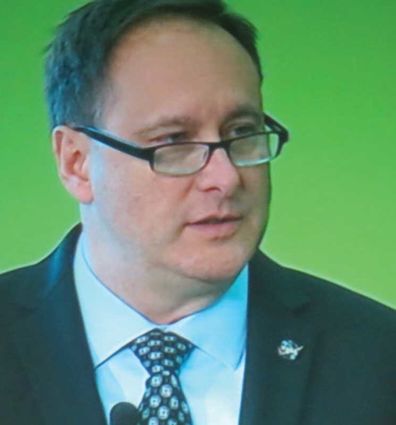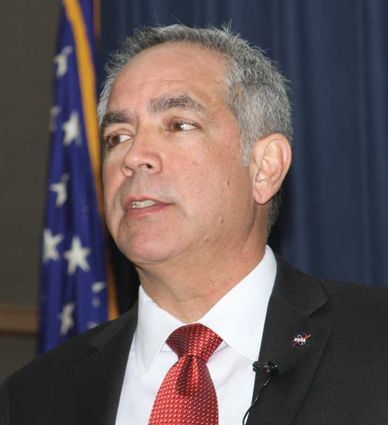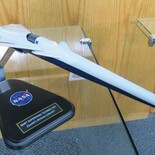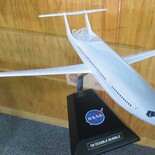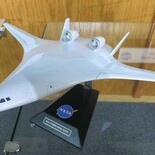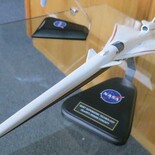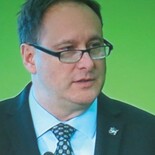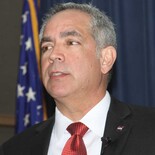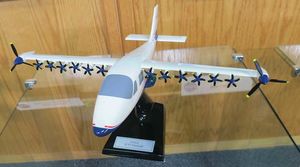Back to the moon and on to Mars
The Forde Files No. 163
The 2019 National Aeronautics and Space Administration (NASA) budget "reflects confidence that America will lead the way back to the moon," Acting Administrator Robert Lightfoot said Feb. 12.
In announcing the 2019 NASA budget from the Marshall Space Flight Center at Huntsville, Ala., Lightfoot said the budget of $19.9 billion was a $400 million increase over last year and supports a renewed focus on space flight activities.
"We're once again on a path toward the moon with an eye toward Mars. It is a truly ambitious and long-term journey to reach out into the solar system."
Between July 20, 1969 and Dec. 7, 1972, NASA landed men on the moon six times, and humans have not returned there since then.
The renewed moon explorations will include human-crewed and un-crewed missions, Lightfoot said. NASA is committed to developing in-space infrastructure, including a platform around the moon and capable landers. NASA scientists will seek ways to generate oxygen from the lunar atmosphere and to prospect lunar resources.
"It's a pretty exciting time and people are pretty jazzed up," Lightfoot said. "We can do this. The administration has entrusted us with a vision."
NASA, he said, has an opportunity to change the world.
"How cool is that. We get to do this every day."
Armstrong Flight Research Center Director David McBride, speaking to a social media event at the Edwards Air Force Base facility following Lightfoot's remarks, said that Armstrong's 2019 budget is $292.1 million, which is up from last year. The increase is "mostly as a result of the X-57 ramping up for flight tests," wrote Jay Levine, editor of Armstrong's X-Press publication.
The X-57 Maxwell is an all-electric aircraft that is the first experimental (X) plane NASA has developed in decades. The battery-powered, 14-engine aircraft will be quiet, efficient and slow, according to Program Manager Tom Rigney. The aircraft will take off and land at 67 mph, go up to 200 mph and will and cruise at 175 mph, he said. Flight testing is scheduled to begin in a few weeks at Armstrong, in March 2018. McBride called the X-57 "a new generation of urban transport."
X-57 engineer Sean Clarke said "It's an exciting time for systems engineers. The battery testing was exciting because they didn't explode."
"X-planes are back," pilot Nils Larson said during a panel discussion. "[They are] why I joined NASA. I have been waiting around for it to happen."
Seventy-one years after the world's first sonic boom from the first X-plane cracked the air over the Mojave Desert east of Tehachapi, Armstrong is working to develop a commercially viable supersonic passenger jet that won't produce annoying sonic booms. The Low Boom Flight Demonstration X-plane could lead to a revolution in air travel if it is quiet enough to be allowed to fly over land. The British-French supersonic Concorde, which flew from 1976 to 2003, was banned from flying over the continental United States because of the sonic booms produced by its speed of Mach 2.0 (1,354 mph).
"We're going to shape the sonic boom so it's more of a soft thump," Armstrong engineer Cathy Bahm said.
Armstrong continues its research and development of unmanned aircraft systems (UAS) and is working with other agencies on plans to integrate unmanned vehicles into commercial air space,
Hernan Posada, who flies the unmanned Ikhana (Predator drone) and Global Hawk aircrafts, said he was proud of Ikhana's performance in assisting fire teams to determine the location of wildfires.
"That was a kind of a home run," he said.
Autonomous systems developer Mark Skoog said there is movement away from multi-rotor quads, and that fixed-wing aircraft are more efficient.
"Aerodynamics doesn't change because you take out the pilot," he said. "Every one of those vehicles is going to obey physics."
Armstrong teams also are developing an escape pod that would rescue astronauts if there were an emergency on the Orion launch pad.
"We have a bold set of plans going forward," Levine quoted McBride.


